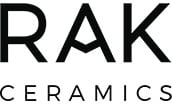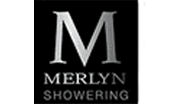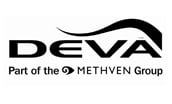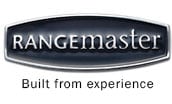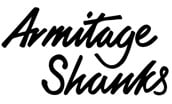Hot Water Storage
One of the essential ‘enabling technologies’ for the integration of low and zero carbon technologies with existing fuels is the use of hot water storage. Hot Water Storage is usually in the form of Cylinders, Thermal Stores, and Combination Boilers.
Residential Heating
In most UK Homes, the provision of domestic hot water comes from hot water storage systems as mentioned above. In recent years, the popularity of combination boilers means that many homes no longer have hot water storage. For optimal use of renewables and low carbon technologies, a hot water storage system is a requisite. Sometimes, this can be used in conjunction with an existing combination boiler.
Hot water storage systems came in two main categories
The “secondary” storage cylinder, a type that stores hot water ready to be drawn off at the top and includes both vented copper cylinders and mains pressure unvented cylinders.
The second category is the thermal store which stores “primary” water generally shared with the space heating system and provides an energy bank from which domestic hot water (at the taps) can be produced using a heat exchanger.
Most of the installed population will still be traditionally vented copper cylinders fed from a cold feed cistern which is normally in the roof space or is integrated with the hot water cylinder as a copper combination tank.
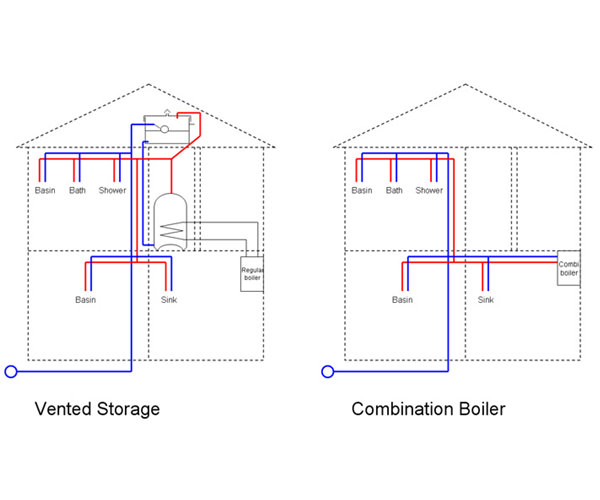
New Properties
In newer properties, the most likely product is mains fed hot water storage system. The majority of these mains fed systems are unvented (secondary) systems, but there are also thermal storage systems which store primary water used as a heat bank to produce hot water with an internal or external domestic hot water heat exchanger. Dependant on heating system design the thermal storage systems also have the ability to act as a buffer tank for the space heating load and are a convenient means of integrating several heat sources as required.
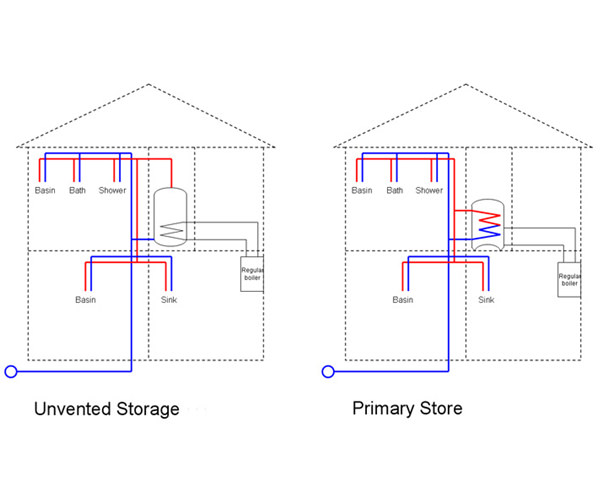
In some cases, the existing cylinder can be retained, but in most cases, a new cylinder will be required with higher levels of insulation, possibly a larger capacity and additional connections and heat exchangers for integrating the various heat sources.
Installation
Fitting hot water storage system may require a competent installer and notification to the Building Control Authorities. Where this work is taking place alongside the installation of a new heat producing appliance, this would normally be covered automatically by the installer under an approved ‘Competent Persons Scheme.'
Hot Water Safety
There are some potential hazards involved in the provision of hot water services for domestic premises. For further information refer: www.hotwater.org.uk
Chimney/air supply
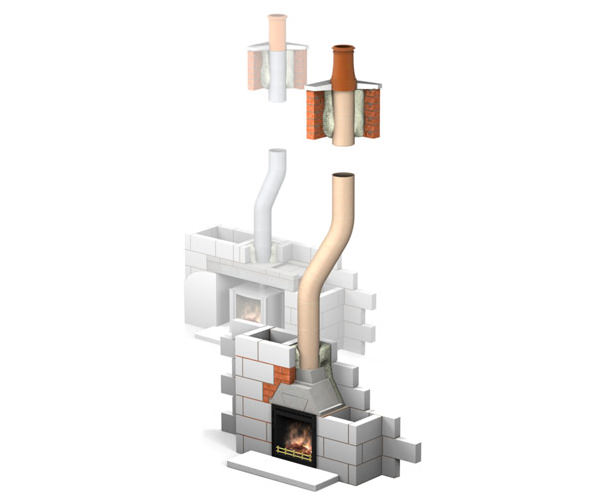
With every combustion appliance, it is important to have a chimney to exhaust the products of combustion. Modern chimney/air supply set-ups add to the efficiency of a building by allowing some of the available wood burning stoves to be room sealed. This improves the energy efficiency of the house and helps balance modern ventilation systems.
UK Building Regulations and European and British Standards apply to the construction, application, and use of chimneys, offering guidelines for regulation and safe application of chimneys. New chimneys and relining of old chimneys require Building control approval. Regulations and Standards applicable are listed in the BFCMA Yellow Guide.
A fully functional chimney ensures a well-ventilated space by drawing fumes and gases that are created by heating systems such as stoves, cookers or fireplaces. These products of combustion are discharged safely into the outside atmosphere.
The chimney draws the products of combustion from the appliance or fire and discharges them to the atmosphere. When ideal temperature conditions are created, the “chimney draw” with an up draught is successful. Size, proper installation of a well-insulated flue and efficient working of the appliance as well as adequate air supply are also important to ensure a good draw.
Further information on Chimneys is available on the BFCMA Yellow Guide available from www.feta.co.uk/bfcma
Temperature Control
A controlled system ensures that you get the best out your heating and hot water systems. For example, on traditional systems, the temperature might be controlled by a thermostat in the room that aims to keep the temperature constant. Your heating is also dependant on the outside temperature as when it gets colder outside, the boiler has to work harder to maintain the temperature, and the thermostat needs to be turned up to make sure the house stays warm.
A weather compensation controller is a device that detects the weather outside the property with the help of a sensor. Knowing the temperature required inside the property, the weather compensation controller can control the right amount of energy to the radiators as soon as the temperature outside alters. With a traditional system, it is much slower to react as it only looks at the internal temperature. As a result of this improvement in control over the system, the costs of running it can drop by as much as 20%.
Biomass Overview
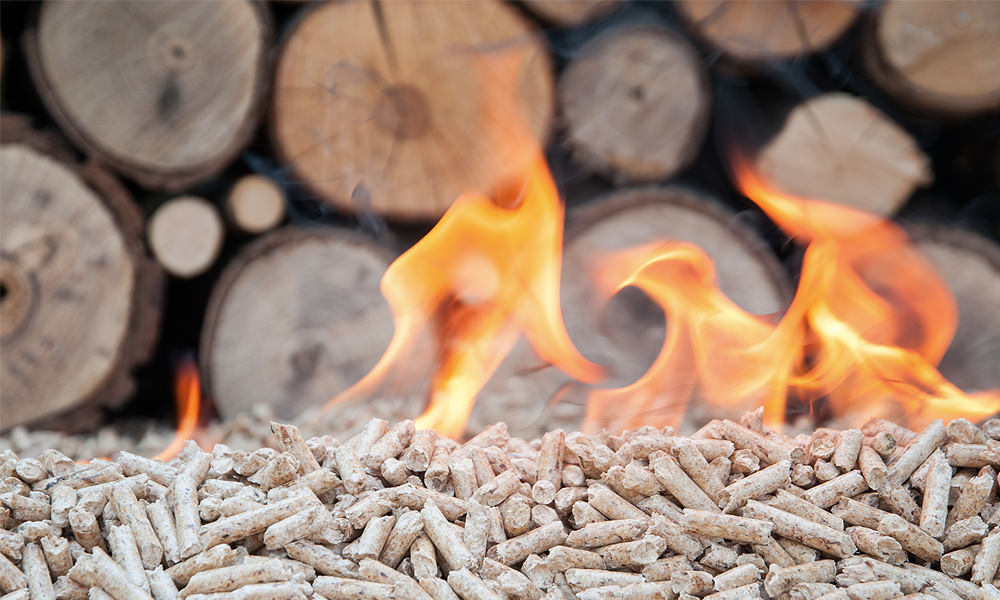
Traditionally, the main source of fuel around the world and in Britain has been wood. Post the industrial revolution; wood was replaced with other fuel sources like coal, oil, and gas. In recent times, wood is making a comeback due to the extensive damage caused to the environment by indiscriminate use of fossil fuels. Wood is a sustainable, renewable, low carbon, renewable source of energy. Its burning is efficient and produces little smoke. Trees that are grown for their wood absorb carbon dioxide incorporating the carbon into new growth and returning oxygen to the atmosphere. Further, on burning of wood, carbon is oxidized and released as CO2. When you compare with fossil fuels, when wood from sustainably managed trees is used for burning, CO2 production is far lesser.
Despite a limited woodland area in Britain, an effective management strategy can ensure that there is enough timber to meet demand for many years. Besides improving biodiversity, managing woodland also supports jobs and lowers dependence on expensive imports of fuel.
Biomass fuel options
- Logs
- Pellets
- Chips
- Briquettes
Smoke Control Areas
There are zones where it is not permitted to burn logs and most wood briquette. It is also not permitted to burn wood on an open fire in these areas.
Room heater / Stove
Wood burning stoves offer the true experience of real flames that provide much-needed warmth and ambience that only burning wood can.
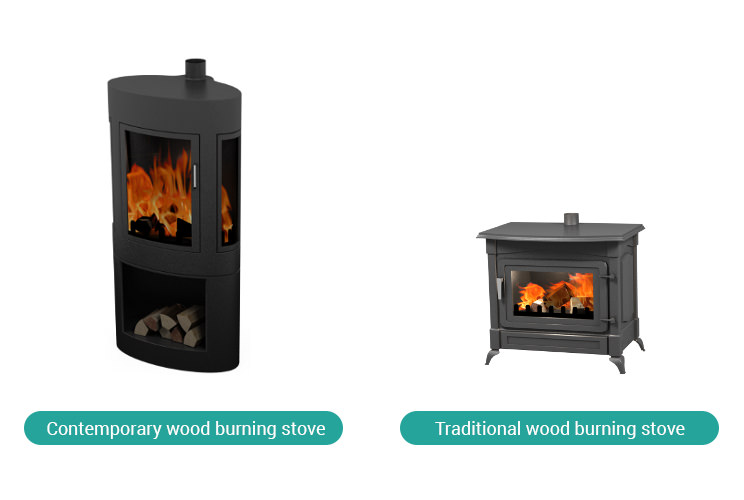
Sustainability
You will also have the peace of mind with the knowledge that every two kilograms of zero carbon wood that you burn will save over one kilogram of carbon dioxide going into the atmosphere; the carbon dioxide that would have been emitted by heating that used gas or oil.
Every time you use a room-heater or stove the zero carbon heat generated will combine with the heat of your central heating system, closing down thermostatic radiator valves. This means you will use significantly less oil or gas and will significantly reduce your dependence on fossil fuels.
Fuel availability
Unlike other renewable technologies wood is abundantly available and on modern appliances, dry quality firewood will burn both cleanly and efficiently. By burning wood, you can create the heat when you want it not just when the sun shines.
Styles
Wood burning room-heaters and stoves come in many different designs from the modern contemporary room-heaters to the traditional stoves.
Installation
All biomass appliances must be installed by a competent engineer. For a list of engineers in your area check the www.hetas.co.uk website.
System Diagram
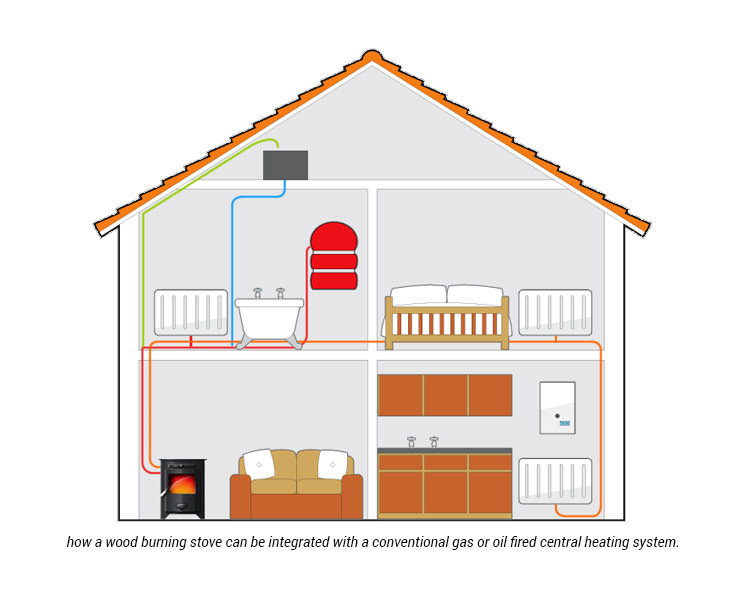
Efficient Stoves
Traditional log stoves make attractive heat sources at a fraction of the cost of other alternatives. They are more efficient compared to open fires and come with a lower fuel requirement. Efficiency can be further improved by selecting the smallest fire box for your heat requirement, controlling hot secondary air, and retaining ash in the base of the fire. A stove that functions with open doors is less efficient compared to an insulated chimney. The chimney outlet temperature must be above 100˚C to prevent any condensation of water. Any smoke emissions that are visible from afar mean the combustion is not running efficiently. Log stoves also come with back boilers for hot water, but this reduces the efficiency of the system.
Operation
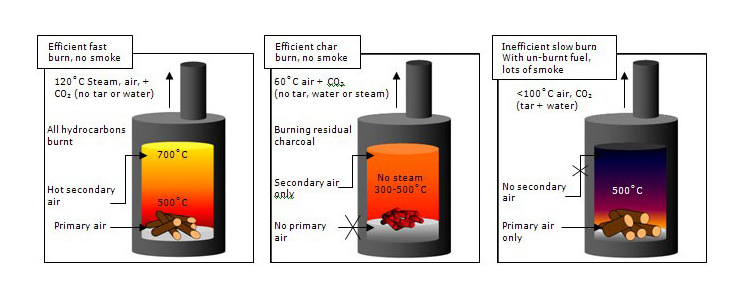
Always set the stove to fast burn after you have added the fuel so that all of the gases are burnt completely. After the wood reduces to charcoal and ash, then you can set to slow burn. When you add the wood and set to slow burn, it creates a lot of smoke and deposits of tar in the chimney. Avoid banking up with logs overnight in the stove. Once you have a bright fire of wood that changes to charcoal should be kept with the day’s ash, secondary air without any fresh air.
Independent wood-burning boiler
Wood pellet boilersWood Pellet Boilers allow you to replace an existing fossil fuel central heating boiler with a near zero carbon alternative. Though physically larger than the equivalent gas or oil boiler, models are available that can be sited in either the kitchen, utility or purpose built boiler room.
Pellets offer the advantage of being very controllable. Automatic ignition and programmable time controls allow you to use your central heating system in much the same way you use an existing gas or oil central heating system.
Pellet boilers are available with either an integral pellet store or they can be fed from an external storage shed capable of holding large volumes of pellets and benefiting from bulk deliveries of fuel.
Log boilersGasification Wood Log Boilers are extremely efficient and unlike stoves only need manually refueling once or twice a day. Log boilers are best suited to burn at high output to charge a large thermal store of hot water that can be drawn from throughout the day.
Log boilers are available for all sizes of domestic properties. The boilers are normally situated in a purpose built boiler room.
Choosing and Drying Logs
Choosing logsLogs for burning should satisfy two conditions decide the net calorific value (CV) or the amount of heat per unit (volume) of fuel. First is the moisture content and second is the density of wood.
1. Moisture contentWood’s moisture content has a significant effect on its net CV. The water present must first evaporate so the wood can burn. Therefore, moisture reduces the net energy released in the form of heat. Wet logs don’t light up easily, and if they do, then the fire produced smoulders and creates a lot of tar and smoke. The tars are corrosive and can damage the flue lining while also increasing the possibility of a chimney fire. Wet logs also tend to blacken glass in stoves while dry logs can have almost twice the CV of damp logs.
Only dried or seasoned wood should be used, either procuring them dry or by first nicely drying the green logs. The moisture content of a log of wood is usually represented ‘dry basis’ or ‘wet basis.'
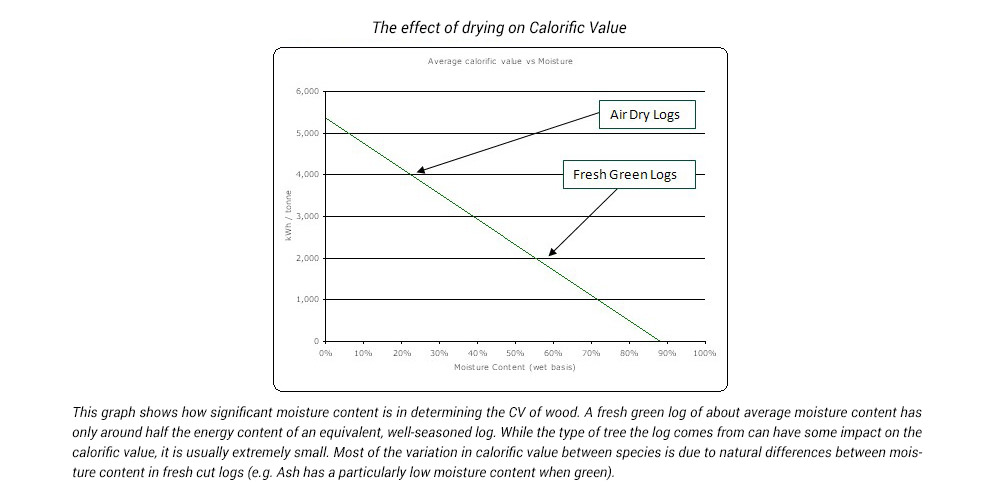 2. Wood density
2. Wood density
When you purchase logs, the seller will usually inform you whether these are hardwood or softwood or mixed variety. Hardwoods are typically denser than softwoods. Hardwood being denser, will burn for a longer and need lesser ‘top ups’ to keep a log stove burning. By volume also, hardwood offers more kilowatt hours (kWh) of heat from a cubic metre (m3) than softwood, having the same content of water.
Finding a Log Supplier
Biomass Energy Centre website (www.biomassenergycentre.org.uk) gives you the information of log suppliers, under woodfuel suppliers section. You can also run a search with the word ‘firewood’ in your local Yellow Pages or another business directory.
Besides price, there are other factors that need to be considered when choosing a log supplier.
- Log size depending on the stove size
- Whether the logs green or seasoned? Buying green logs and drying them yourself is a lot cheaper, but you also have sufficient space to house them.
- Are you going to buy by weight or volume?
- The source of the logs, whether the woodland is sustainably managed, and are they local or imported?
- Does the price include delivery of the logs? Usually, the delivery will not include the stacking of logs, with the stacking left to the buyer. Some suppliers will tip directly into a shed or bunker.
Drying logs on your own
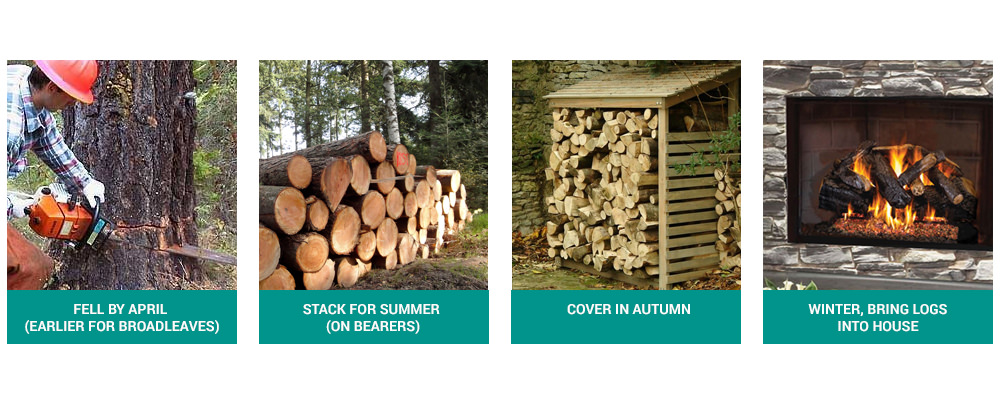
- As we already know, green logs are much cheaper than dried or seasoned logs, but are dense because of the moisture and will require space to stack and dry before use.
- The timing of the tress felling is crucial as wood of trees will be driest in winter. As many stoves require about 20% or less moisture content, this may require two or more summers by air drying.
- It is advisable to stack drying timber on bearers in a sunny, windy location, and ideally, should be covered with a waterproof sheet with open sides. The placement should be such so as to allow wind to blow through the stack. Cutting cross cut logs to less than 10cm diameter, will also quicken the drying process.
- It will also help to bring cut, split logs indoors for a few days or more before burning.
Using logs efficiently
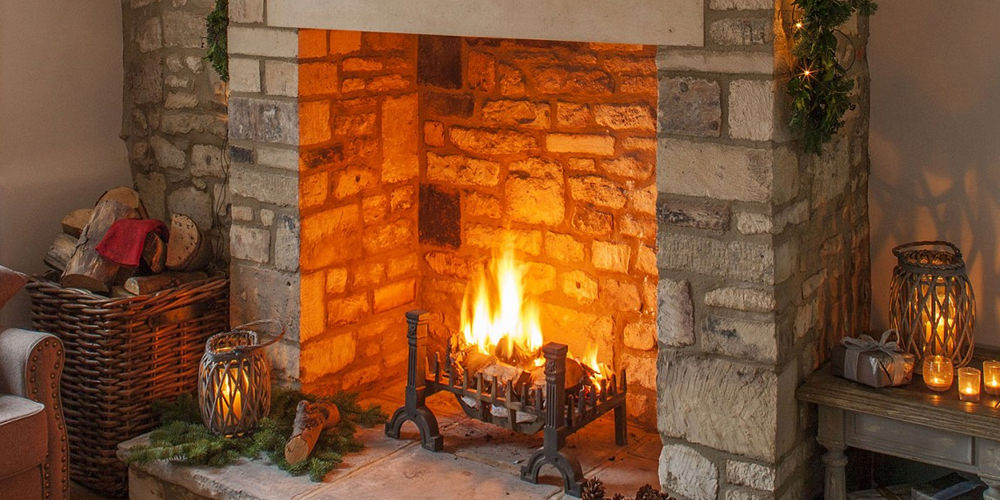
Open Fires
From years, logs are burnt on open fires and spreading warmth. Having said that, open fires are an inefficient method of heating as the uncontrolled air flow pushes the heated air from the open fire up the chimney, and also draws warm air from the other parts of the house. The cold outdoor air is drawn in through drafts and vents to the house and replaces the warm air. Typically an open will run at about 25% efficiency, causing smoke and ash and not much heat output. Also, when open fires are not in use, the chimney can allow huge amounts of cold air into the room and increase other heating costs. A solid base is required for open fires to retain an ash bed. Coal grates are not ideal for wood, it is best to cover it with a metal base plate and use a fine mesh spark guard.
Contamination
Wood with contaminants or that treated with any chemicals, coatings, paint or preservatives, should never be burnt. Such contaminants can increase the amount of tar and deposits that build up in your chimney and release toxic chemicals. The ash of contaminated wood often contains melted chemical debris, and may also lead to serious health issues upon burning.
BioFuel
Bio-liquids are useful for producing heat and electricity in homes and are a cleaner, sustainable and renewable form of liquid fuel.
What is a bio-liquid?
Bio-liquids that are generally used in home heating market are Fatty Acid Methyl Esters (FAME) produced from organic sources such as used cooking oil or virgin plant sources such as Rapeseed and Soya, grown specifically for this purpose.
Utilizing FAME in liquid fuels reduces the carbon in emissions to a high degree as compared to traditional mineral fuels like kerosene or gas oil. This is as a result of the carbon absorbed by the plant during its lifecycle offsetting carbon emissions from the combustion process.
Producing FAME from used cooking oils gives a higher carbon saving than that of virgin plant stock*.
*source Renewable Fuels Agency
FAME for heating must comply with the requirements of standard EN 14213 and also produced under strict quality assurance guidelines for attaining the desired quality and fuel properties.
Biofuels can either be used as part of a blend with mineral fuels such as kerosene or gas oil or even in its pure form as a 100% bio-liquid fuel with bespoke equipment.
OFTEC Heating Oil Project
To produce new bio-liquid compatible equipment such as burners and boilers and to convert older installations, an extensive know-how of properties of the fuel is essential. Supply of the said fuels must be abundant and consistent. To achieve this OFTEC has drafted an industry blend standard PrOPS24 - as a result of intensive academic laboratory and industry supported field trial analysis.
Use of bio-liquids in current appliances!
The properties of bio-liquids and bio-liquid blends in comparison to mineral fuels such as kerosene are different. This is an important factor to bear in mind as this means that to change from 100% mineral fuel (even to kerosene or gas oil bio-liquid blend) will require formal conversion and re-commissioning of installations and equipment. The bio-liquid is thicker and heavier and has different energy content. The properties of bio-liquids being different to mineral fuels, these react differently to different materials. Materials such as rubber – as found in fuel pump and filter seals – which are commonly encountered in mineral fuel installations are not compatible with bio-liquids.
Bio-liquid compatible components must be in place before use of a bio-liquid as a heating fuel. These are available from OFTEC Manufacturing Members. Pressure jet appliances and installations can be converted to run on bio-liquids with relative ease but only where the actual properties of the fuel are known.
Conversion would commonly require the replacement of parts such as nozzles, pumps, flexible oil lines and filters.
However, it may be necessary to obtain a bio-liquid compatible burner. Attention should also be paid to suction line sizing as a correctly sized kerosene suction line may require an increase in size.
Bio-liquids are hygroscopic (they absorb water) and should never be introduced to oil storage and supply systems which are contaminated. Contaminated systems should be cleaned before application of bio-liquids as the consequences will inevitably result in blocked filters and inoperative systems.
Bio-liquids should never be introduced to existing oil storage installations which do not have secondary containment as the cleaning effect of the fuel may well find weaknesses in existing tanks which could lead to leaks. It is advisable to install new integrally bundled oil storage tanks designed for bio-liquids, wherever possible. To help prevent long term storage stagnation it is recommended that smaller tanks are utilized based upon half yearly usage.
For bespoke installations where a 100% FAME is being considered as the fuel to be used in a specific application then consideration will have to be made to the use of heated and insulated fuel storage tanks as well as trace heated and insulated supply lines.
Bio-liquid fuels should not be used in vaporising burners and appliances. Bio-liquids in kerosene can have an adverse effect on vaporising burner combustion and manifest as premature carboning in vaporising sleeve burner bases, almost immediately. It is better to convert vaporising appliances such as range cookers to bio-liquid conversion burners after adequate approvals.
For general conversion advice, you can refer to the OFTEC guide to conversion called “Going green.” If you are looking for specific advice on the availability of bio-liquid, new and conversion equipment & components, please contact appliance, equipment, and burner manufacturers.
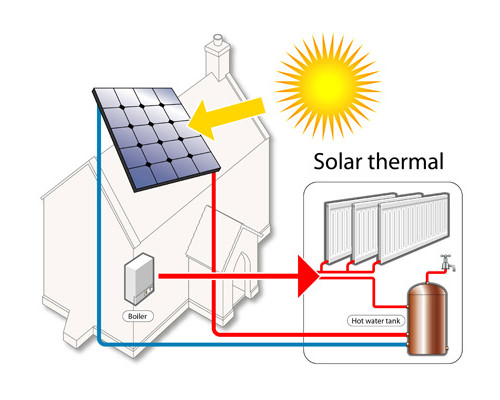
Solar Panels
Solar panels absorb the sunlight as a source of energy and generate heat or electricity.
There are two types of solar panels;- Solar photovoltaic (PV)
- Solar thermal
They both work almost on same principles but provide different types of energy.
In case of the photo voltaic solar panel, this generates electricity by harnessing the sun’s rays on a panel. This is how solar garden lights work. Solar PV can be used to supply electricity to your house and could power a heat pump if you have one fitted. It works by the photo voltaic cells ‘capturing’ the sunlight, feeding it through an inverter and then into a battery for storage before is drawn off by the house. Any electricity not used by the property can then be fed back into the electricity grid.
In the case of solar thermal, a liquid is passed through the panel and heated up by the Sun’s rays. The heated liquid is then circulated through a hot water cylinder using heat transfer tubes so that the incoming mains cold water can be heated.
Solar panels should always be fitted by a competent person, and details can be found at www.microgenerationcertification.org.
Heat Pumps
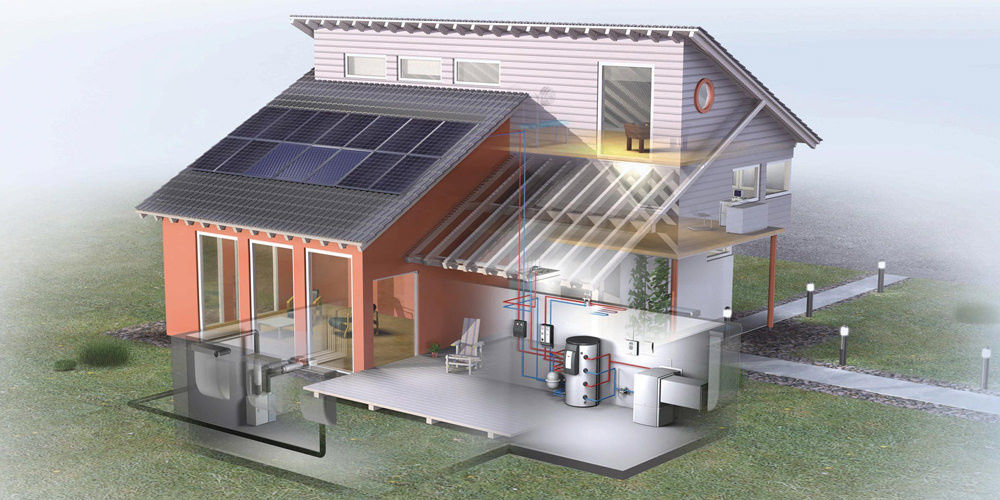
Heat pumps work in the same way as a fridge but in reverse. It takes heat from one place and delivers it to another, at a higher temperature. The heat is extracted from various sources such as water, air, and ground.
The heat pump works on electricity that can be either from a solar photo voltaic panel or the electricity grid. For every £1 of electrical energy put into power the heat pump, you get the equivalent of £3 or more of renewable heat back.
The heat pump works by using a refrigerant, via a heat exchanger, to extract the thermal energy from the ground, water or air as with a refrigerator. The refrigerant vaporises at very low temperatures (typically -2˚C) enabling it to work in winter. This gas is then compressed so that its temperature rises. Passing the compressed gas through a second heat exchanger allows the heat to be given up to water or air heating circuit.
Always ensure the loft insulation is to the very latest specification (300mm) otherwise all that very efficient energy will be escaping through the roof rather than heating your rooms. Details of companies qualified to fit loft insulation can be found at www.nationalinsulationassociation.org.uk.
In case of the photo voltaic solar panel, this generates electricity by harnessing the sun’s rays on a panel. This is how solar garden lights work. Solar PV can be used to supply electricity to your house and could power a heat pump if you have one fitted. It works by the photo voltaic cells ‘capturing’ the sunlight, feeding it through an inverter and then into a battery for storage before is drawn off by the house. Any electricity not used by the property can then be fed back into the electricity grid.
In the case of solar thermal, a liquid is passed through the panel and heated up by the Sun’s rays. The heated liquid is then circulated through a hot water cylinder using heat transfer tubes so that the incoming mains cold water can be heated.
Solar panels should always be fitted by a competent person, and details can be found at www.microgenerationcertification.org.
Combined Heat & Power Unit
A Combined Heat and Power unit means that it can generate both heat and electricity and can run on mains natural gas or liquid petroleum gas (LPG), supplied in bottles. It should be noted that the type of gas being used to power the boiler must be specified at the time of purchase as manufacturers supply different variants for each fuel type.
There are various types of CHP unit available using a number of different technologies. They all use gas to power them and have varying levels of electrical efficiency associated with them and generally have a gas condensing boiler as the supplementary heat source to the CHP ‘engine’. These appliances are classified as low carbon as they provide an efficient means of providing heat and power generated in the dwelling. The electrical efficiency can range from about 5% to 60% depending on the type of appliance which would replace electricity coming from the Grid which has an efficiency of about 40%. The real benefit is that the locally generated electricity reduces the requirement to use Grid Electricity at peak loads which are when the costs are at their highest. One of the challenges of climate change is to reduce peak loads on the Grid as this reduces the need to have extra power generators that are only required for these peak loads.
The CHP unit supplies hot water in the same way as a gas boiler, and it is possible to connect them to solar photovoltaic and solar thermal for electricity and domestic hot water generation.
It is essential the CHP unit, or any gas appliance, is installed, serviced and repaired by a Gas Safe registered engineer. Details of Gas Safe registered engineers can be found at www.gassaferegister.co.uk.
Before fitting a CHP unit, always ensure the loft insulation is to the very latest specification (300mm) otherwise all that very efficient energy will be escaping through the roof rather than heating your rooms. Details of companies qualified to fit loft insulation can be found at www.nationalinsulationassociation.org.uk.
Controls should also be to the latest standard using Thermostatic Radiator Valves (TRVs) and room and a room thermostat. Room thermostats must be very carefully located in relation to the TRVs as they can sometimes work in conflict if they are too close together. A qualified installer will be able to advise on this.








